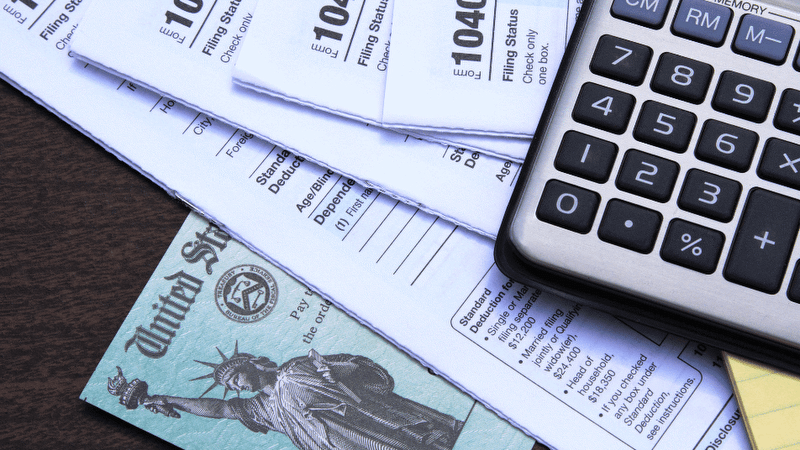The Benefits of Having a 401k and a Self-Directed IRA
Investing in both a 401k and SDIRA can be a smart strategy to save for retirement.
Posted on February 24, 2022

For those who participate in a company 401k plan, you might be wondering if it is possible to invest in a self-directed individual retirement account (SDIRA) and a 401k plan at the same time. The short answer is yes, and it could be a smart financial strategy for those who qualify. Having a 401k plan at work doesn't affect your eligibility to have a self-directed IRA. In fact, you can save more by contributing the maximum amount to both accounts.
While a 401k and self-directed IRA both can be used for retirement investing, each account has unique differences. Understanding the benefits and drawbacks for both will better help you decide which account – or both – can help you reach your financial goals.
What is a 401k Plan?
A 401k plan is a type of retirement plan that allows employees to set aside money from their wages into individual accounts. Employees can elect to defer a portion of their salary pre-tax, reducing their taxable income. This deferred income will not be subject to traditional income tax until withdrawals are made at retirement. Employers may also make contributions on behalf of the employee.
Benefits & Limitations of a 401k
Taking full advantage of your 401k benefits is one reason you might consider contributing to both plans. 401k plans help their employees save for retirement by allowing for moderate to high contribution limits. For 2023, the contribution limit for a 401k is $22,500 per the Internal Revenue Service (IRS). Employees aged 50 and over can contribute even more to their retirement plans with a catch-up contribution limit of $7,500.
Another benefit of a 401k is employers often contribute to your account and match your savings. Typically, employers match up to a certain percentage of your salary or contribution; however, each employer has its own methods and rules for matching 401k plan contributions. Since the company will often match some or all funds an employee contributes, you could be leaving free money available by not contributing at least enough to receive the full employer match.
Investment options in a company 401k plan can sometimes be limited to mutual funds or other publicly traded types of investments, which could be another reason why someone would choose to have both accounts. While many employers are starting to offer more investment choices, some 401k plans still have a fixed selection. A self-directed IRA allows for more diversification.
What is a Self-Directed IRA?
A self-directed IRA (SDIRA) is an incredibly versatile type of retirement savings plan that can contain various types of alternative investments typically not allowed by regular IRAs. The noteworthy aspect of an SDIRA is that it's directly managed and overseen by the account holder. This autonomy gives savvy investors the freedom to diversify their portfolios in ways they couldn't do with a regular IRA.
Benefits & Limitations of a Self-Directed IRA
The biggest benefit of a self-directed IRA is that the account holder can chose from a multitude of investments, more than those that are only publicly traded. Private investment options can include real estate, promissory notes, cryptocurrency, private equity, LLCs, tax liens, oil and gas, land, and other private placements. A wider pool of alternative investment choices can help make finding an affordable, high-performing investment easier.
Self-directed IRA contributions have a smaller allowable maximum, which could be seen as a drawback. For 2023, the maximum contribution for Traditional and Roth IRAs is $6,500 (with an extra $1,000 available catch-up contribution if you are 50 or older). However, your Traditional IRA contributions have the potential to be tax-deducible if you meet the modified adjusted gross income (MAGI) requirements. Your MAGI could limit your Roth IRA contributions, so it's important to consult a tax advisor to see how much you may be allowed based on your filing status.
It's also important to note that once you separate from an employer, you have the option to rollover your retirement funds from your 401k to your self-directed IRA which allows you to greatly increase the funds in your self-directed IRA and increases the amount of investment opportunities.
401k vs SDIRA - Which Account is Best?
When deciding if you should invest in a 401k, a self-directed IRA or both, remember that each account has pros and cons to offer. It's hard to argue if one account is better than the other and both plans offer tax benefits; it really depends on your situation and retirement goals. More importantly, you should always know that the ability to invest with both plans is out there if you want the option!
For more information about which accounts can help you reach your goals, ask an IRA Specialist for more education. Our staff is always available to answer your questions. Simply schedule your free one-on-one consultation.








